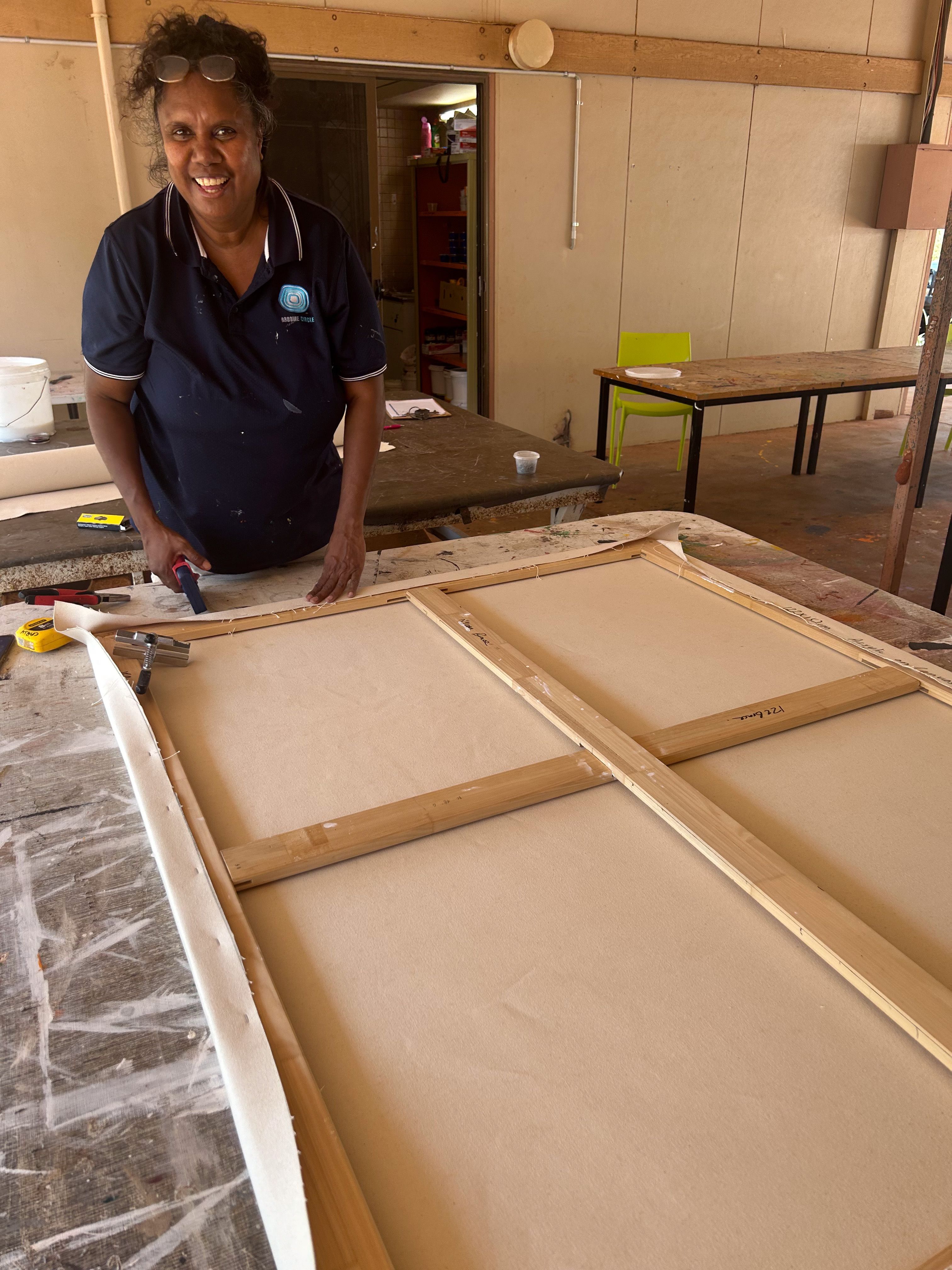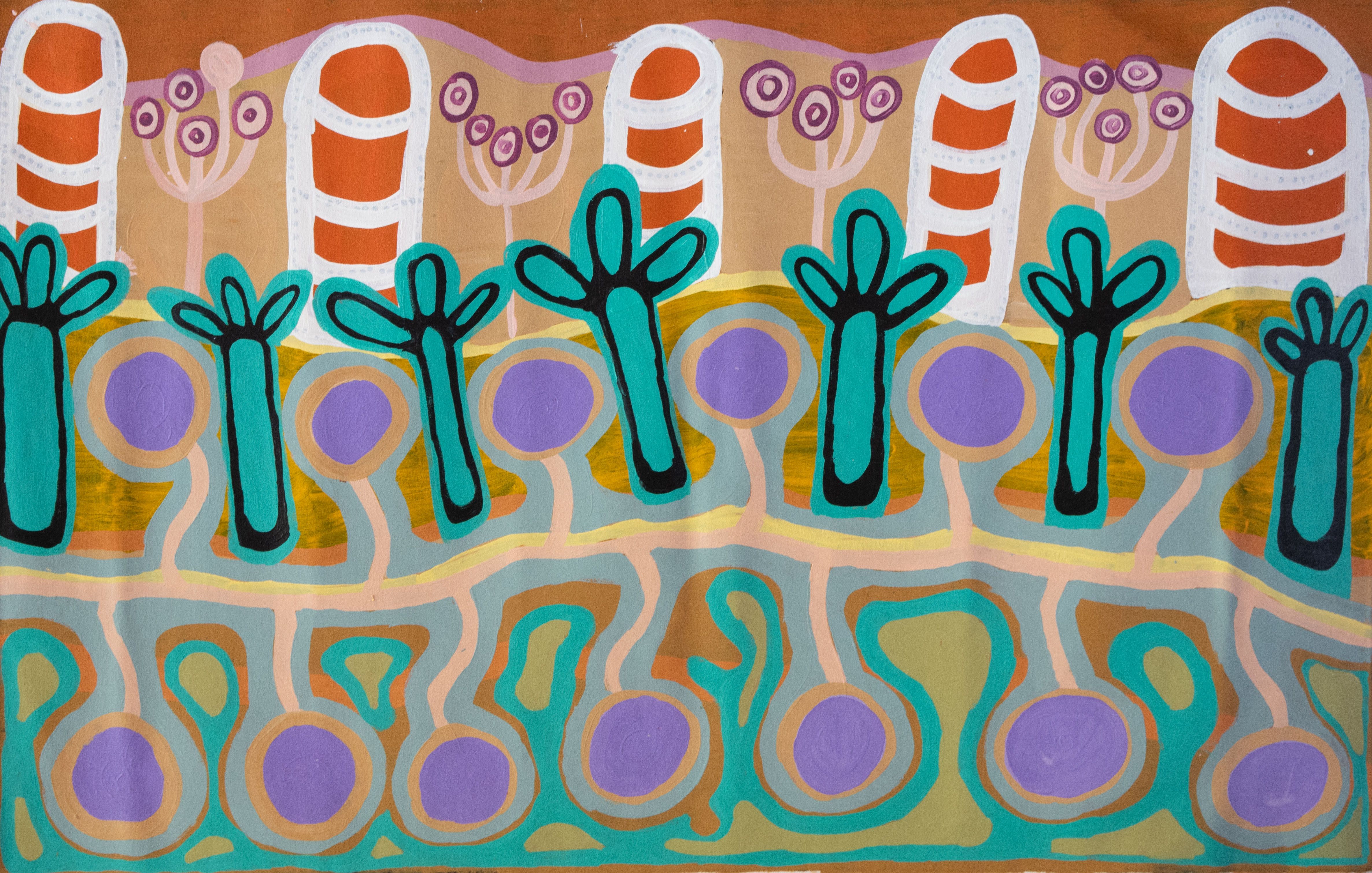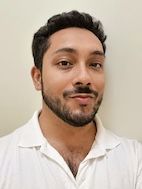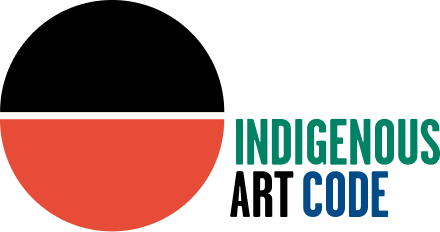Tracey Mulardy is an artist and arts worker of the Karajarri peoples. Her homelands, the community of Bidyadanga, is the largest Aboriginal community in the Kimberley.
What does fair mean to you? Interview with artist Tracey Murlardy

The community is 180 kilometers south of Broome. Practicing her art for a number of years, she has a great love for, and connection to, her and her peoples’ lands and Cultures. As her arts practice continues, Mulardy is not only learning about a range of new techniques, but also about her Culture, from her Old People. Also an education worker for over a decade, Mulardy’s professional practice is now centred with the Broome CIRCLE organisation and is very much steeped in creative arts full-time.
Mulardy is known to work in printmaking, linoprints, as well as works on textiles and fabrics (utilising a range of dying techniques). Though, in recent times, her art is transferring once again to the medium of paint and canvas.
“I’m really enjoying working back on canvas!”, says Mulardy,
“Mixing paints is something I’ve wanted to learn to do for a long time now. I’m also learning how to stretch canvases over frames. These are skills most painters should have the opportunity to learn”.
Speaking about what inspires her as an artist and storyteller, Mulardy says that it’s all to do with her Country and where she comes from.
“Coming from the seaside, next to the coast, mainly I depict marine life. From the land, I’m inspired by the wet season and I love painting the flowers and plants in bloom when it rains! In dry season, when it’s hot and windy and there’s bushfires, I paint about that”.

As an educator, Mulardy holds great respect for the rangers and the programs they run and their care for Country. “I recently finished a piece focusing on the rangers here and their traditional back burning”, says Mulardy. She believes that artists have a unique position to tell the stories of her people and their Cultures, but also of their practices (exemplified in her local ranger program).
Speaking about what supports she wishes could be introduced (or better funded), Mulardy remarks that funding for artists to travel and go ‘on Country’ is key.
“[…] It’s so artists can experience being out on their lands, while they make artworks—that’s expensive and challenging to do. So, funds for this sort of activity would be most helpful—it’ll keep our art and Cultures strong”, says Mulardy.
“Teaching children about plants and their uses, this education could take place with much more participation if there was funding that could work between rangers, schools and art centres”.
In reflecting upon her own career as a professional artist, when asked about any experiences of poor practice, Mulardy says she’s one of the lucky artists not to have been taken advantage of and to have received incredible support from industry colleagues.
“I love working with the Art Centre and I have great support with them”, says Mulardy,
“We all have ups and downs as creative people, but I can go to my team at the Art Centre and get support from them and talk things through. So, I find—while I’ve not been treated unfairly in my work in the arts industry—that the arts really is a great and safe space for me and people to come to and work”.
_________________________
Indigenous Art Code asks Code Signatories (Code Signatories) to work fairly and transparently with artists, and the Indigenous Art Code of Conduct (the Code) sets out guidelines for Code Signatories to do this.
But from the artist’s perspective, what is fair?
Following conversations with Waanji, Teppathiggi and Tjungundji artist, writer, activist and deep thinker, Jack Wilkie-Jans, Indigenous Art Code commissioned him to write something about the concept of ‘fair’ from the artist’s perspective. In this series of interviews, Jack speaks with a diverse group of First Nations artists and cultural practitioners from across the country to better understand what fair means to them when they are creating art that is to be sold or licensed.

Jack Wilkie-Jans (Waanji, Teppathiggi and Tjungundji man of British, Vanuatuan and Danish heritage) is an established arts writer, artist, arts worker, and Aboriginal affairs advocate from Cape York Peninsula, based in Cairns/Gimuy, Queensland. After 12 years working across the contemporary Indigenous visual arts sector (at all levels of project management, domestically and internationally), in 2023 Jack launched his own consultancy practice: JWJ Consultancy. Professionally, Jack specialises in arts writing & review; policy guidance; governance and operational best Cultural practice; artist representation; regional economic development; and land management.
A Tribal Great-Grandson of Dr Thancoupie/Thanakupi Gloria Fletcher James AO, Jack is an Alumni of the National Gallery Leadership Program (2011). As an artist (painting, film and photography) his focus is on post-colonial narratives and non-Culturally specific artistic abstraction and exploration.

